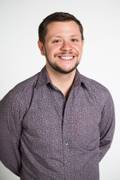The alphabet soup of sexuality and gender identity doesn’t end at LGBT. A more inclusive acronym extends the group of four communities to 10 with LGBTQQIAAP (lesbian, gay, bisexual, transgender, queer, questioning, intersex, allies, asexual, pansexual). And while the gay and lesbian segments are quite visible—in news headlines and popular culture—some other parts of the spectrum are less noticed and more misunderstood.
That’s why UNLV student Sara Beth Brooks was at the White House last week, taking part in a Bisexual Awareness Week conversation after being invited by national bisexual advocacy group BiNet USA. Brooks says her focus was to advocate for more inclusive data collection.
“Many federal surveys that are inclusive of sexual orientation—which there aren’t that many—include gay and lesbian but don’t include … [other] sexual minorities,” says Brooks. She believes a lack of public awareness and education about those communities could be a factor in the many issues they face. “There’s a mounting wealth of scientific evidence that bisexual, biromantic, pansexual, panromantic people experience higher rates of suicide, they’re less likely to be out at work and … they have a harder time with immigration into the U.S.”
Brooks says it’s those issues that make education about sexual minorities so important, which is why she helped found Asexual Awareness Week in 2010. “Most people don’t understand asexuality as an orientation,” Brooks says. “Or if they do understand it, they are skeptical whether it is one that should be valued and recognized.”




